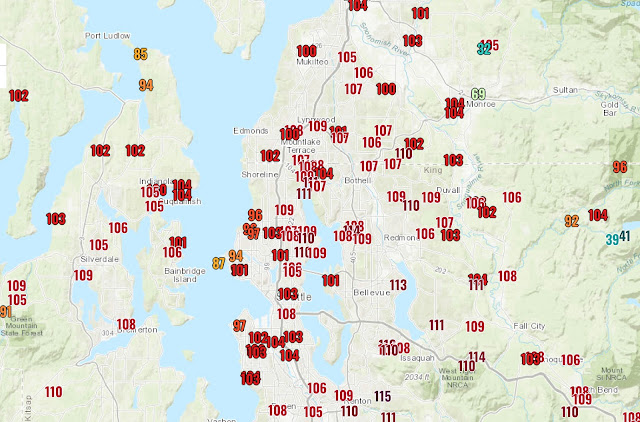FastCast—Wednesday, June 29 to Monday, July 4:
What a change! Tuesday’s high temperatures were a staggering 20-35 degrees below Monday’s…only reaching the mid 60s to low 70s (even with some rain showers), in comparison to the low to mid 90s on Monday. Wednesday will be cloudy, with highs again in the upper 60s to low 70s and a slight chance of showers. Thursday and Friday will be warmer, with partly to mostly sunny conditions and highs in the mid 70s to low 80s. Clouds increase again on Saturday, with highs in the mid 70s, and a slight chance of showers beginning in the afternoon. A system will move through on Sunday, with 0.1-0.2 inches of rain for the lowlands (isolated higher totals possible). More rain and higher totals (up to 0.75”) are possible in the mountains. Fourth of July currently looks to be cloudy with highs in the upper 60s and a chance of morning showers. Stay tuned!
———————————————————
Continue reading the full blog below!
Tuesday was a major weather change from Monday, with high temperatures significantly cooler than 24 hours before, as seen in the NWS graphic below.
This is a huge 24-hour temperature difference for our region. Differences ranged from 20 to 35 degrees below Monday’s temperatures.
Why was it so much colder on Tuesday? The answer is the marine layer, essentially a cloud deck that moves in from the ocean and typically brings cooler temperatures and onshore winds (which scour out heat and replace it with moist, cool air).
This can be illustrated through NOAA GOES Weather Satellite Imagery, comparing Sunday and Tuesday.
The image above for Sunday shows crystal clear skies over most of the Pacific Northwest, with the obvious marine layer moving up the Southern Oregon Coast. These mostly clear skies brought temperatures in the upper 80s to mid 90s on Sunday and Monday.
Notice that Western Washington is shrouded in clouds. Complete cloud cover brought the significant decrease in temperatures and some definite heat relief.






No comments:
Post a Comment